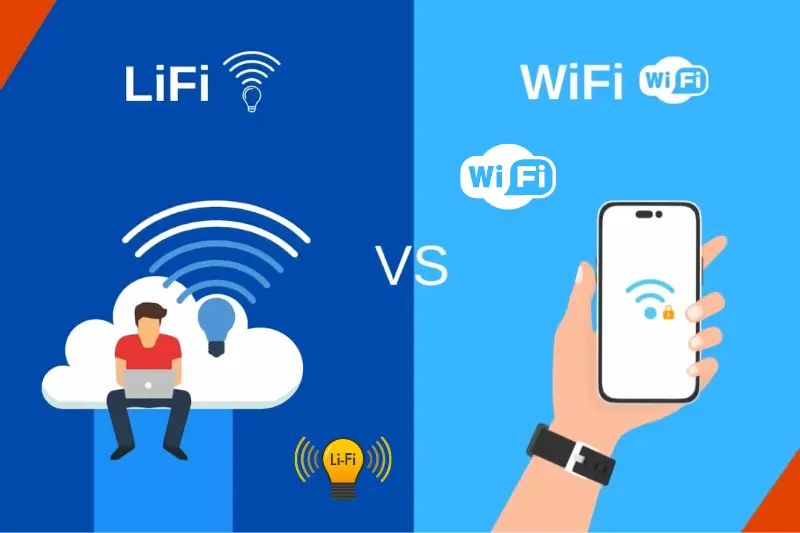In the modern digital era, educational institutions are more and more dependent on technology to improve the teaching and learning environment. Wireless connectivity has now become indispensable for the purpose of uninterrupted access to online resources, collaboration, and the support of many learning applications. Even though WiFi (wireless fidelity) has been the leading technology for wireless communication, the advent of LiFi (light fidelity) has opened an entirely new era of wireless data transmission. The focus of this article is to give a comparative analysis of LiFi vs WiFi technology, considering the pros and cons of both approaches in the context of educational settings.
Understanding WiFi and LiFi
WiFi is a well-established wireless technology that uses radio waves to transmit data between devices. It is widely used in educational institutions to allow students and staff to go online and access different online tools. On the one hand, LiFi uses visible light to transmit data at high speeds; it is a relatively new technology. The operation of a LiFi system is based on the technology of LEDs to convert data into modulated light signals, thus providing a new way of communicating.
Comparing Bandwidth and Speed
One of the key tasks that educational institutions must do is ensure that high-speed internet is available to support multimedia-rich content, online collaboration tools, and resource-intensive applications. Compared to WiFi, LiFi technology has a strong point in this regard. LiFI can reach data transfer rates several times higher than WiFI because it works in the visible light spectrum, which has immense and largely unused bandwidth.
Deployment and operational considerations
Although LiFi has some benefits, it also has some limitations, which should be considered. LiFi systems generally require line-of-sight communication; therefore, any physical obstructions can disrupt the data transmission. This may demand meticulous planning and deployment in order to guarantee good coverage in larger establishments.
Another factor that should be taken into consideration is the integration of LiFi technology into the existing lighting infrastructure and the installation of specialized equipment, which might be very costly for educational institutions, and this may be an obstacle to its adoption, especially for institutions with limited budgets.
Exploring Hybrid Solutions
The hybrid solution, which combines the benefits of both WiFi and LiFi, might be the best choice for educational institutions due to the advantages and disadvantages of the two. WiFi could be used generally for connectivity and coverage in common areas, while LiFi could be strategically deployed in classrooms, lecture halls, and other high-density areas to provide high-speed, secure, and interference-free communication.
Conclusion:
The contrast between LiFi and WiFi technology for education institutions showcases that every single approach has its own specific advantages and disadvantages. Although WiFi is the most popular and widespread technology, LiFi opens new prospects for wireless connectivity, security, and bandwidth availability. Along with ever-advancing technology, educational institutions must investigate the opportunities of LiFi and implement hybrid solutions that utilize the strengths of both technologies simultaneously. Through a thorough analysis of their peculiar requirements and infrastructure, institutions can make balanced decisions to guarantee optimum connectivity, security, and support for technology-driven education.
